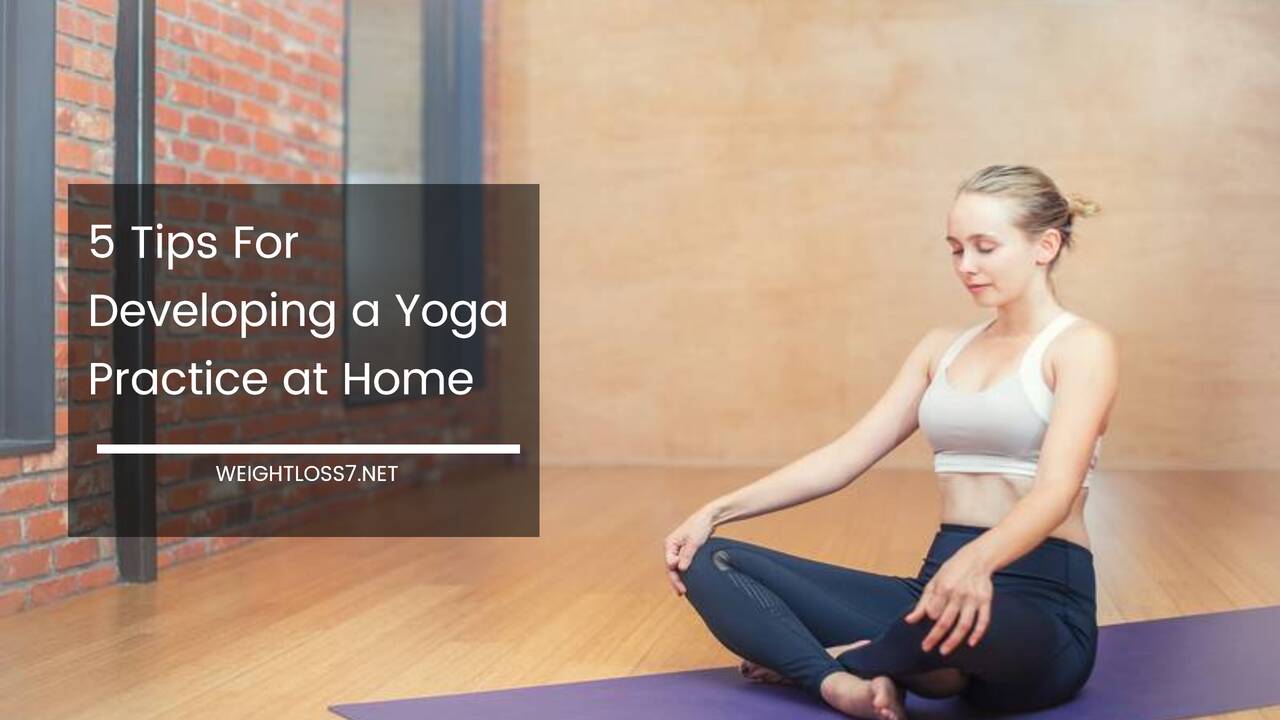5 Tips For Developing a Yoga Practice at Home

Obstacles always crop up that prevent a yogi or yogini from maintaining a regular practice at a studio.
Whether it’s finances, the drive, or an incompatible schedule, you may be down to one class per week or less. A home practice can be just as rewarding and allows you the flexibility to include it in your daily routine.
Plus, it’s free. From beginners to advanced practitioners, the idea of creating a sequence and avoiding distraction can be daunting.
Here are 5 tips for building a home practice that suits your needs:
Carve out a quiet nook in your home
Find a clutter-free space where you can unroll your mat, maybe light a candle or some incense, and immerse yourself in the flow. Purchase some blocks and a strap if you need to modify. A room with a door is preferable.
However, if that’s not an option, try practicing at a time when the rest of your house is sleeping or when no one is home. Be sure to avoid your cell phone or laptop. To really de-stress and remain present, limiting disruptions is key.
Become well-versed in alignment and technical know-how
Practicing without knowing what you’re doing is a recipe for getting hurt. You also won’t reap the full array of rewards that come from a session on the mat.
If you’re a complete beginner it’s advisable to attend a few classes under the guidance of an experienced teacher. This will allow you to gain an understanding of the sequence of poses, alignment principles, and the overall yoga vibe.
There’s also nothing wrong with starting your home practice by following along with a yoga DVD or online yoga class until you feel comfortable with branching out on your own.
Sequencing is always a challenge, regardless of how experienced you are
Each day, prior to your practice, tune into your body and mind.
If you are looking to increase your energy, incorporate challenging poses such as planks, warriors, and arm balances. If you want to mellow out, opt for a restorative practice close to the ground.
Remember that yoga is about balance. Start with centering and poses that warm up the body. Then, dive into your standing poses.
Follow standing poses with seated poses, such as seated forward folds. Move onto the back for backbends, inversions, and poses to wind down.
For example, knowing that fish pose often follows a shoulder stand will let you plan accordingly.
Always try to choose a few poses in each category: standing poses, including balancing poses, backbends, forward bends, twists, inversions, seated poses, and restorative poses.
As you advance in your practice you can throw in some arm balances, headstands, and handstands.
Plan your sequence out ahead of time so that you’re not thinking about the next pose or wracking your brain for a posture.
Write it down so you can peek at the notes if you draw a blank. Once you’ve mastered the principles, you’ll have no problem with sequencing a practice on the fly.
Dedicate a specific time each day to practice
Schedule your yoga time as you would schedule any appointment. There will be days that you don’t feel like getting on your mat. However, once you’re on the mat you will notice that your resistance tends to disappear.
Be careful of forcing it too much. If you’re sick or run down and you still don’t feel good once you’ve commenced your practice, a day off won’t kill you.
Maintain realistic expectations
Start by practicing 20 minutes per day and then gradually build up. Even 10 minutes is better than nothing. If you’re a beginner, stick to beginners’ sequences until you are ready to move on to something more advanced.
Following these tips will allow you to delve into a home yoga practice.
You can even enlist a friend or family member to join you in order to stay motivated.
Always end your practice with savasana and allow yourself a few minutes of stillness and silence to prepare for your day. Your mind, body, and spirit will thank you.

















